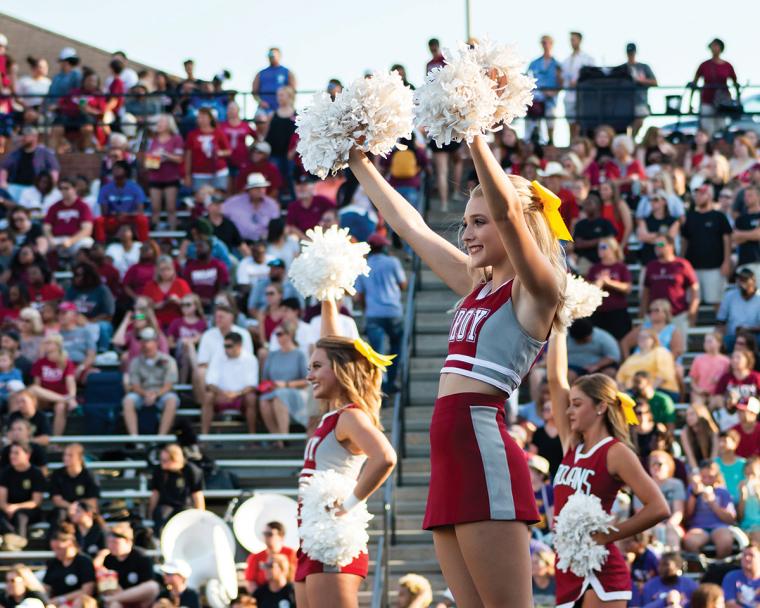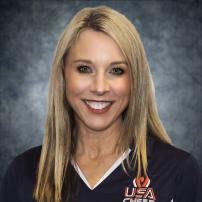
The last year has brought a lot of changes to the sport as well. And while we weren’t happy about COVID-19 (was anyone?) since it ended everyone’s school year early and cancelled competitive events, there were still some very positive developments. Here is a quick review of those as well as a look ahead, courtesy of USA Cheer, the national governing body for cheer.
Connecting Cheer Athletes with College Coaches
USA Cheer will be holding seven college combines this year starting in late August and running through late September. They will be held on the campuses of the University of West Georgia, Texas Woman’s University, Vanguard University, Sacramento State University, University of Delaware, Ursuline College and Oklahoma City University.
Combines are open to all junior and seniors in high school and junior college students/athletes interested in cheering and/or competing in college. This event is a way for coaches to recruit potential athletes for their college cheer and/or STUNT teams. The intention is that coaches and athletes connect to find the best fit academically and athletically. USA Weightlifting will also be present at many of the combines offering an opportunity to learn more about weightlifting at the collegiate and Olympic level.
Previously, there had not been a lot of ways for cheer athletes to connect directly and easily with college coaches, apart from traveling to specific colleges, sending videos to coaches, or competing in events where coaches were likely to be. We believe that as we continue to host cheer combines, coaches will recognize them as the place to look for up-and-coming athletes.
USA Cheer also has a relationship with CaptainU, which is a software platform that allows athletes to market themselves to coaches and college programs. Overall, at USA Cheer, we are focused on helping athletes expand their reach and find the right fit when it comes to continuing on in their cheer or STUNT career.
Cheer and the COVID-19 Era
The use of technology to connect athletes with cheer programs is something that really became important this past spring. Because many competitive cheer, pom and dance programs could not host in-person tryouts, they held virtual tryouts, allowing athletes to go through interviews and to upload clips of themselves performing specific skills. From there, coaches could make their choices (or at least narrow down the possibilities from a larger pool of applicants). In fact, there were even some cheer organizations at the NFL level that used this method. It is good to see people were able to develop workarounds during a very difficult time.
We are still waiting to see whether schools will be able to open and what sports will look like in the coming academic season. One thing is for sure, though: once everything does get back up and going, spirit is going to be very important to everyone.
Safety Protocols
Cheer just keeps getting safer and USA Cheer is proud to say we have been involved in efforts to help make that happen. In the last five years, data from the National Center for Catastrophic Sport Injury Research shows that cheerleading has experienced a major reduction in injuries. This is in large part due to additional rules and restrictions, as well as improved training for coaches.
In the 2017-2018 school year, there were zero reported catastrophic injuries in cheerleading, and two reported in the past five years. In fact, the numbers of catastrophic injuries from cheerleading over the past five years are similar to other girls’ high school sports, including track and field, softball, and gymnastics, and are lower than those for football, baseball, wrestling and girls’ soccer.
We can attribute that to better training and education for coaches as well as athletes. USA Cheer regularly updates its Cheer Rules for all ages and programs: youth, middle school, junior high, high school, college and all-star/club, and offers a USA Cheer Safety Course as well as a rules course. We recommend all coaches complete the safety course every four years because we want to empower them to make good decisions that keep athletes safe but allow them to retain their ability to challenge themselves. And I think it is obvious from watching some of the really great performances out there, that it is a success.
STUNT as an NCAA Emerging Sport
In May, USA Cheer got the news we had been waiting for: STUNT, which is the organization’s all-female team sport, has been recommended by the Committee on Women’s Athletics (CWA) to be added to the NCAA’s roster of Emerging Sports for Women. It now begins to work toward obtaining championship sport status.
Under the rules of the NCAA, in order for a sport to reach championship status, a minimum of 40 schools need to be offering it as a varsity sport, or 28 at the DIII level. We had 39 school programs this spring season, where we played with a shortened schedule due to COVID-19, and another 12 schools that are committed for the 2021 season. It is safe to say we are off to a very good start.
STUNT, which is one of the fastest-growing female sports in the country, removes the crowd-leading element and focuses on the technical and athletic components of cheer, including partner stunts, pyramids, basket tosses, group jumps and tumbling. These elements are put together in short routines that two teams (each representing a different school) must perform head-to-head on the floor at the same time. The team that executes the skills best wins the round and the point and also has the opportunity to determine which of routine level will be called next. With four quarters of play (divided into partner stunts, pyramids & tosses, jumps & tumbling, and team routine), STUNT is an exciting sport to play, coach and watch.
USA Cheer created STUNT as an opportunity for colleges and universities to meet Title IX requirements. With more than 500,000 high school cheerleaders moving on to college, STUNT expands participation opportunities for young women by providing an avenue for female athletes to use their cheerleading background in a new format. We are also seeing growth of STUNT at the high school and youth levels, so it is our hope that there will be a strong pipeline of talent in the years to come.
Inclusive Programs
USA Cheer is responsible for selecting the U.S. National teams (these include the All-Girl and Co-Ed teams that represent the USA at International Cheer Union events, the highest level of competition). However, we are also very proud of the way we have been able to expand programs for cheerleaders with special needs. This year, had the ICU World Cheerleading Championships been able to take place in April as planned, we would have fielded seven teams in the Adaptive Abilities and Special Olympics divisions.
USA Cheer’s Adaptive Abilities Unified teams (formerly known as ParaCheer) and the Special Olympics Unified teams offer competitive opportunities for athletes with and without an intellectual disability, while the Special Olympics Traditional Teams are comprised of athletes with disabilities only. In all cases, they provided an opportunity that gets people moving, having fun and being together, as well as competing as a team – and that is a win for everyone.
Thanks to all these developments and to a sport filled with enthusiastic athletes and caring coaches, the future of cheer looks good. In fact, we have had some developments this past year that were downright historic. It is a huge starting point for us as we head into a new season. SDM

